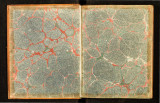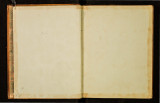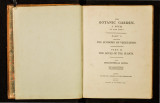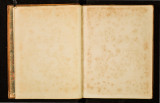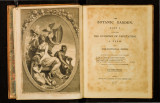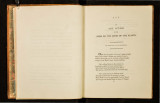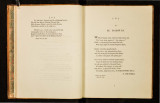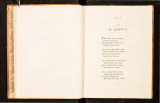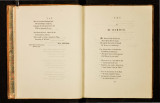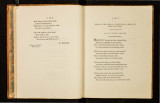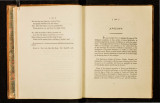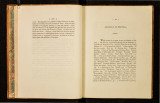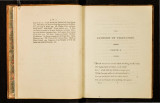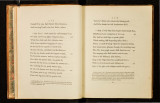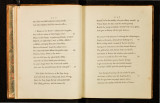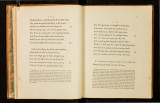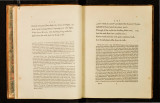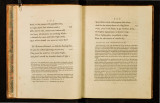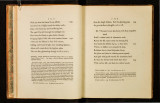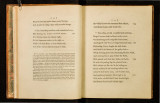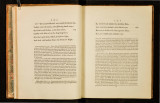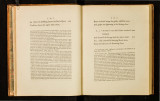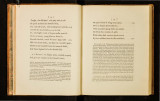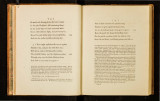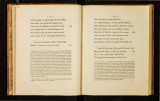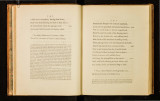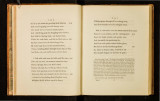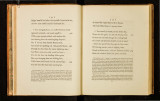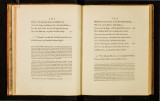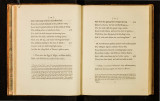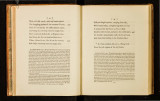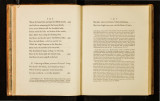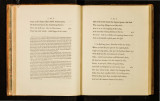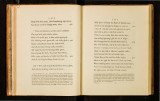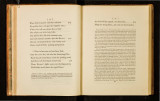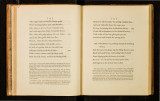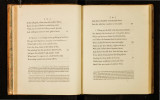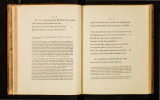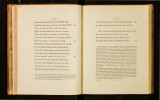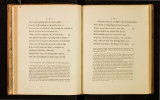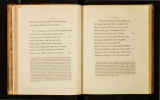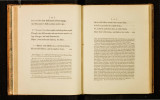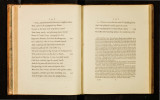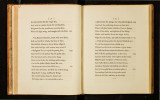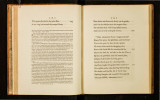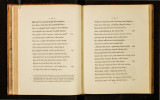| OCR Text |
Show FLINT. NoTE XIX. 44 d . them above one hundred and thirty as fecure Ill [; ct out the plugs with which the. wate~ ~ ()nebec by MJjvr William . Edinb. Tran a • ding to the expcnments a '<.: yards, accor h Vol. II. P· '23· . ich now lie before me, the external cruft.for about t e In fame !iliceous no?ulcs "h . h sit is much thinner, and 10 fome much ·n f ·h·te agJte tn ot er . b t tent h o fan inch conltltS o . "I Ih ' s cruft' there :ue f'r om twenty to thirty fupenncumI en n thi cker. correfponding wtt l t ~. I . whence it appears, that the extern:l crua , I d k d lt ahter co our, "IT I d . . ll ata of alternate y ar ·er an b . h . mangancfe which was dwo ve m It ; llr ' ll d f m 1t t e tron or as it cooled or froze, prope c ro It Urong enough to re!ift its further pro. . . h d ~ ed an arch or vau 1 I c . this receded ull It :1 orm n it cooled or froze, propel et IOrwarCls . fiphere or nratum as . trufion; then the next mner "II other arch or fphere produced fufficl ent . the fame manner, tl an . I . its colouring matter w S f them have detruded their co ounng h. f . [cent expulfion. ome o . refiUance to t IS ngore . . . t become darker as they are nearer ll; . h the rtnas contmumg o d matter qutte to t e centre, b h n d half an inch from the centre, an h I b t arch feems to :lVC nappe . in others the c a y ea e . r If h . any matter from the whtte nuc1 e us, . k b having attraC\ed to ltlC t e If r f f become thlc er y . . . . l . the central parts than at the iUr ace o owm. g prob ably to its coohng lefs prectpltate y 111 . the pebb'lIe . d . . lar arches or vaults obtains in the fait fio of a mar1v matter w Clrcu r I A fiml ar et~u I n . D LI tton very intreniouOy concludes, that the Ia t . . Cl {h re from whence r. J. . u b I b mwes m 1e 1 , • h ld ~ to be much confirmed by t 1e a ove mufl: have been liquified by heat; whlc wou eem theory. Edinb. Tranfact. Vol. I. fPS· 244· bbles without obferving that fome of them · Jude this account o cots-pe · d · 1 cannot cone . . ~ nder feem ftill to poflcfs fame vefliges of the cylm n-on being fawed longltudmally a uh ' IT ~ nucleus of white agate much refembling . . of vegetables . ot ers poueiS a cal orgamzatJon . . ' . ts or the knots in elm-roots or crab-trees; ~ b lbous roots w1th the1r concentnc coa , . h £orne ~ thefe I fuppofe were formed in the manner above explained, dunng t e cont~l:~: noof maffes of melted flint and iron; other~ m~y have been formed from a vegeta e nucleus, and 'retain fame vefl:iges of the orgamzatJon of the plant. 4. SAND OF THE SEA. The great abundance of filiceous fand at the bottom of the ocean may i~ par~ be {h d down from the filiceous rocks above defcribed, but in general I fuppofe 1t denves w·t a cei d only from the vegetable and animal matter of moraffes, w h"I C h I·S cam·e d do wn by 1f lso oad s or by the atmofphere, and becomes united in the fea W·i t h 1· ts; ca1 c areous b a fe frodm. fhdls and coralloids, and thus affumes its cryflalline form at the bottom of the o~ean_, ~n- 15 there intermixed with gravel or other matters wafhed from the mountains in Its V!CI11lty. 5· CHERT, OR PETROSILEX. The rocks of marble are often alternately intermixed with ftrata of chert, or coarfe flint, and this in beds from one to three feet thick, as at Ilam and Matl~ck, or of lefs than the tenth of an inch in thickriefs, as a mile or two from Bake'rvell m the road to NoT'E XIX. FLINT. 45 Buxton. It is difficult to conceive in what manner ten or twenty firata of either limefione or flint, of different !hades of white and black, could be laid quite regularly over each other from fcrliments or precipitations from the fea; it appears to me much eafier to comp1 ehend, by fuppofing with Dr Hutton, that both the folid rocks of marble antl the flint had been fufed by great beat, (or by heat and water,) under immenfe preffure; by its cooling or ccngealing the colouring matter might be detruded, and form parallel or c11rvilinear firata, as above explained. The colouring matter both of limef!:one and flint was probably owing to the flefh o£ peculiar animals, as well as the filiceous acid, which converted fome of the limeflone into flint; or to fame flrata of fhell-f.fh having been overwhelmed when alive with new materials, while others dying in their natural fituation.c; would lofe their flefhy part, either by its putrid folution in the water or by its being eaten by other fea-infects. I have fome calcareous foffil thells which contain a bbck coaly matter in them, which was evidently the body of the animal, and others of tbe fame kind filled with fpar inflead of it. Th~ Labradore ftone has I fuppofe its colours from the nacre or mother-pearl !hells, from which it was probably produced. And there is a fl:ratum of calcareous matter about fix or eight inches thick at Wingerworth in Derbylhire over the irun,beds, which is replete with !hells of frdh-water mufcles, and evidently obtains its dark colour from them, as mentioned in note XVI. Many nodules of flint refemblc in colour as well as in form the !hells of the echinus or fea-urchin; othcm refemble fome coralloids both in form and colour; and M. Arduini found in the Monte de Pancrafio, red flints. branching like corals, from whence they feem to have obtained both. their form and. their colour. Ferber's Travels in Italy, p. 42. 6. NODULES OF FLINT IN CHALK-BEDS. As the nodules of flint found in chalk-beds poflefs no marks of having been rounded by attrition or folution, I conclude that they have gained their form as well as their dark colour from the fleth of the lhell-fifh from which they had their origin; but which have been fo compleatly fufed by heat, or heat and water, as to obliterate all vefliges of the !hell, in the fame manner as the nodules of agate and onyx were produced from parts of vegetables, but which had been fo completely fufed as to obliterate all marks of theiJ> organization, or as many iron-nodules have obtained their form and origin from peculiar vegetables. Some nodules in chalk-beds confifl: of lhells of echini filled up with chalk, the animal having been diffolved away by putrefcence in water, or eaten by other ft:a-infects; other !hells of echini, in which I fupp®fe the animal's body remained, are converted into flint but ftill retain the form of the J)lell. Others, I fuppofe as above, being more completely fufed, have become flint coloured by the animal f!efh, but without the exaCt form either: of the flelh or !hell of the animal. Many of thefe are hollow within and lined with• cryflals, like the Scut's-pebbles above defcribed; but as the colouring matter of anirrul.. |



